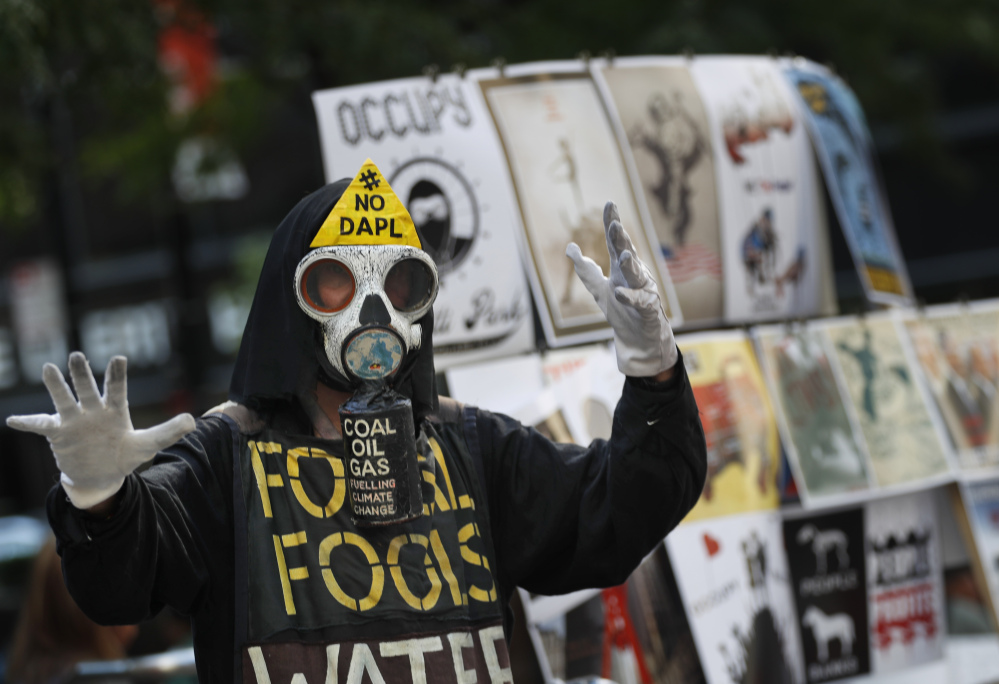NEW YORK — For a time, Occupy Wall Street was everywhere with its grass-roots encampments – first in New York City, then globally – and the refrain, “We are the 99 percent!”
And then it was gone. Its most famous camp in lower Manhattan was cleared out in an overnight police raid two months after it started, and other Occupy locations fizzled soon thereafter.
But five years later, demonstrators gathered once again in New York City’s Zuccotti Park on Saturday to commemorate the movement and what they said has been its lasting impact.
About two dozen attended the gathering, many holding signs to demand political and banking reform. Others chanted, blew whistles and carried photo cutouts of political figures, including former Attorney General Eric Holder.
Occupy Wall Street takes some of the credit for introducing income inequality into the broader political discourse, for inspiring the fight for a $15 minimum wage and, most recently, for creating a receptive audience for the Democratic presidential campaign of Vermont Sen. Bernie Sanders.
“Everyone knows we were right,” said Caleb Maupin, who was working in the insurance industry when he joined the movement five years ago. “We had a major campaign for president with Bernie Sanders. The campaign was like a giant Occupy Wall Street rally, talking about the 99 percent and the 1 percent because millions of people know we were right.”
Maupin, who said he would rush to Zuccotti Park every night after work, was arrested twice during the group’s two-month encampment. He said it helped shape the country’s political discourse.
And some political observers even draw a line between the movement and the rise of Republican presidential nominee Donald Trump, who tapped into the vein of suspicion against the power of elites – the 1 percent – that Occupy made ubiquitous.
Nicholas Kiersey, a political science professor at Ohio University, said Trump’s rise is part of Occupy’s impact, as well.
“If Bernie Sanders represented a left-wing popular suspicion that had felt all of a sudden very legitimate in expressing its grievances, Trump, I think, represents the mirror of that from the right,” he said. “They both, in a sense, have ridden the momentum of popular dissatisfaction.”
Other social movements have followed Occupy, such as the Fight for $15, a minimum-wage campaign that started with fast-food workers in New York City in 2012 and has spread, with victories in states, including New York and California.
Send questions/comments to the editors.



Success. Please wait for the page to reload. If the page does not reload within 5 seconds, please refresh the page.
Enter your email and password to access comments.
Hi, to comment on stories you must . This profile is in addition to your subscription and website login.
Already have a commenting profile? .
Invalid username/password.
Please check your email to confirm and complete your registration.
Only subscribers are eligible to post comments. Please subscribe or login first for digital access. Here’s why.
Use the form below to reset your password. When you've submitted your account email, we will send an email with a reset code.